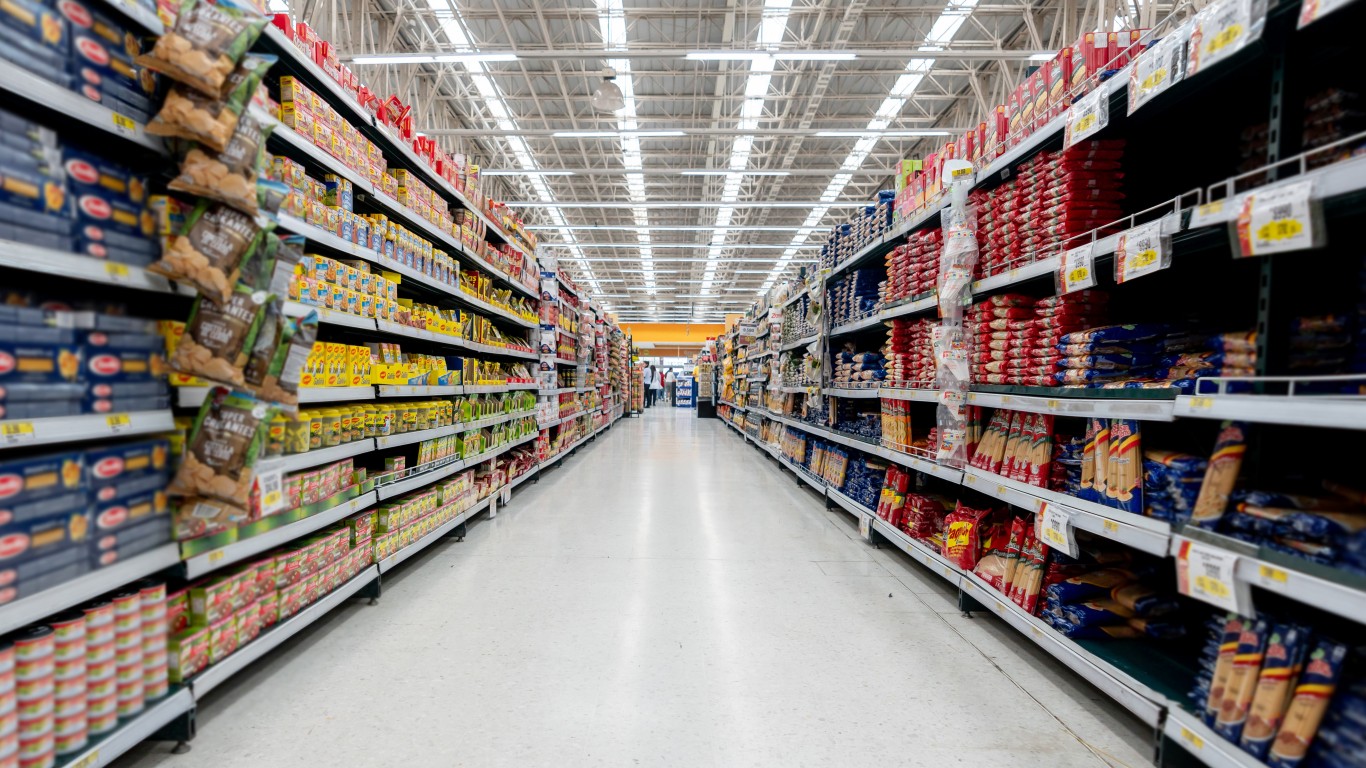Investing
Loblaw’s Latest Earnings Points the Finger at Its Suppliers for Higher Prices

Published:

Loblaw Companies (CA:L, US:LBLCF) provided shareholders with a lot to be happy about in its second-quarter 2023 results reported on July 26.
However, behind the scenes, a potential rift grows with Canada’s biggest grocer’s suppliers that could get ugly if something doesn’t give in the near future.
Wednesday’s earnings report turned out to be two stories rolled into one. The first was a feel-good story of profitable growth; the second was a finger-pointing case suggesting the company is tired of taking the heat for higher grocery prices.
The Loblaw stock price is down just over 3% for the year to date yet is still trading at a price-to-earnings multiple of 20.4x. U.S. grocers are slightly lower, with Kroger (US:KR) trading at 13.8 times its trailing 12-months earnings and shares of Albertsons Companies (US:ACI) at 9.97x.
The Numbers Were Good
“Loblaw delivered another quarter of strong operational and financial results as it continued to execute on retail excellence. The quarter was characterized by increased sales, a focus on value, and lower gross margins,” stated its July 26 press release.
The company reported revenue of $13.74 billion during the quarter, 6.9% higher than a year earlier. Its food same-store sales rose 6.1%, while its drugstore sales via Shoppers Drug Mart increased by 5.7% on solid gains for both the front of the store and in the pharmacy. (All figures in Canadian dollars, unless specified otherwise.)
As for its e-commerce business, revenues rose by 13.9%, indicating that its digital platform continues to grow in use by Canadians.
On the bottom line, it reported $508 million in earnings during the second quarter, 31.3% higher than a year earlier. If you want to be picky, its retail segment experienced a 30-basis-point decline in its adjusted gross profit margin.
On an adjusted basis, Loblaw’s net earnings were $626 million, 10.6% higher than in Q2 2022. The difference between the reported and adjusted earnings was a $111 million charge in last year’s first quarter for PC Bank commodity tax.
The company reported $600 million in free cash flow during the quarter. It used $511 million to buy back 4.2 million of its shares.
As the company said, it was a strong quarter of retail excellence.
Tempest in Teapot?
While Canada’s largest grocery store chain delivered at a high efficiency level in the second quarter, it left no doubt with investors and shareholders that it’s getting tired of being blamed for higher food prices.
According to Chief Financial Officer Richard Dufresne, Loblaw has seen its suppliers’ prices rise by more than a billion dollars in 2023, and there’s still half a year left.
“This is double what we would expect normally,” The Globe and Mail reported Dufresne’s comments from Loblaw’s Q2 2023 conference call. “We have received double-digit increases from the same suppliers who gave us double-digit increases last year. That’s why you see products that are noticeably more expensive than they were just a couple of years ago.”
Dufresne went on to say that when suppliers lower their prices, Loblaw will pass these reductions on to shoppers.
Consumers who are skeptical about Loblaw’s sincerity regarding food prices should consider what’s happening south of the border.
The New York Times opinion writer Peter Coy recently discussed how business is betting that consumers have gotten used to high prices. He mentioned an interview he did with Corbu investment strategist Samuel Rines. The Houston-based analyst discussed how businesses in 2022 focused on raising prices high enough to cover higher costs. The goal: to have the higher revenues make up and then some for volume losses from those higher prices.
In 2022, Rines told Coy, businesses have kept prices high while their input costs have fallen, producing higher margins. They don’t want those margins to go away anytime soon.
Loblaw has pushed back against supplier price increases, but until it begins to cut into its profitability, it’s doubtful a full-fledged war is about to break out.
That’s excellent news for Loblaw shareholders. Not so great for Canadian grocery shoppers.
This article originally appeared on Fintel
Thank you for reading! Have some feedback for us?
Contact the 24/7 Wall St. editorial team.